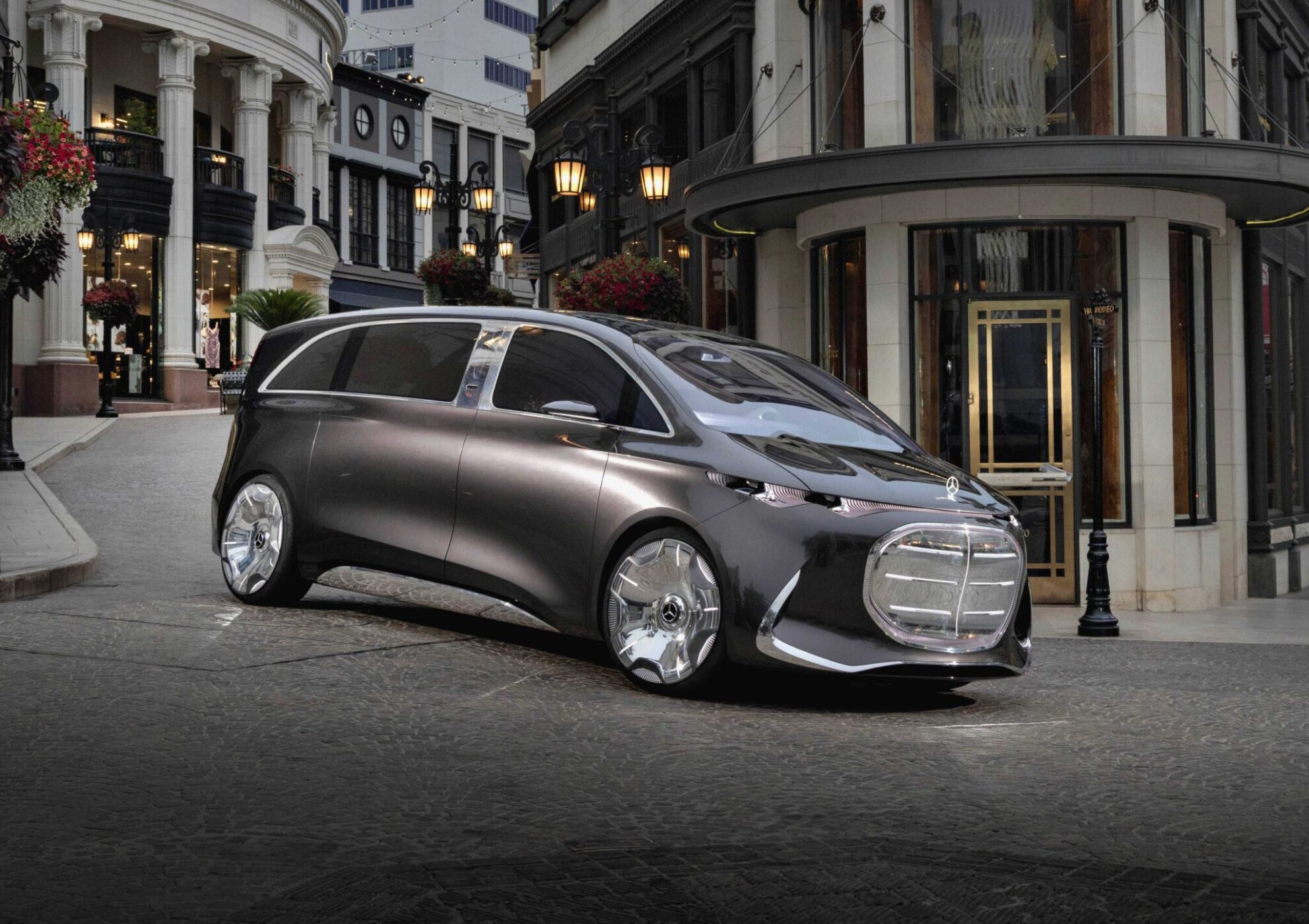The Mercedes-Benz Vision V: A Glimpse into the Future of Electric Vans
Welcome to the Age of Electric Vans
As someone who frequently travels for automotive media launches across Europe, there’s a familiar comfort in the ruggedness of fleet taxis like the Mercedes-Benz Metris or V-Class. Each trip typically begins with the gentle hum of a diesel engine and the abrupt stiffness of a suspension that seems intent on transmitting every bump in the road straight to my spine. While these experiences are often far from luxurious, they underscore the potential for electric vehicles (EVs) to revolutionize the transport landscape, especially for services like shuttle operations or taxi services.
The field is ripe for innovation, with electric vans offering smoother driving dynamics and a design that facilitates battery use—think of the skateboard-style layouts. This potential is precisely why Mercedes-Benz is venturing into the electric van market, recently unveiling its ambitious concept, the Vision V.
Unveiling the Vision V at Monterey Car Week 2025
This year, the Vision V made its debut in the U.S. at Monterey Car Week. Prior to that, a select group of media representatives got an exclusive preview in Los Angeles. Set against the stunning backdrop of Dodger Stadium, the van presented itself as both a design marvel and a glimpse into what the future might hold, albeit still in a concept phase. As I climbed aboard, my curiosity was piqued—not only by the functional features but also by the innovative tech solutions that graced the interiors. While much of this may evolve—or even fade away—by the time the production version appears in 2026, the Vision V’s initial design raises the bar for electric vans.
Breaking Down the Design Language
The Vision V pushes the boundaries of modern van aesthetics. Mercedes-Benz representatives emphasized that the concept’s styling will mostly translate into the production model. An expansive chrome grille and a jaw-dropping 190 illuminated louvers give the front a unique yet familiar look—an artistic nod to design while still being functional. Features like retractable hinge systems for sliding doors show Mercedes’ commitment to improving aerodynamics and overall aesthetics.
The van measures an impressive 18 feet length, boasting a wheelbase of 139 inches—a notable design aspect that enhances space without compromising on visual appeal. The choice to minimize the impression of size through sleek design elements is commendable, ensuring that even at a substantial scale, it doesn’t feel bulky.
Luxury Meets Technology: A Spacious Interior
The Mercedes-Benz Vision V also aims to redefine luxury travel. While the series models will forgo the EQ moniker, their models—VLE and VLS—are engineered to cater to various customer needs. The interior encapsulates a blend of comfort and cutting-edge technology. From the plush Nappa leather that greets your touch to innovative wooden accents, it feels thoroughly upscale.
A standout feature in the rear passenger compartment is a massive 65-inch screen that unfolds from the floor—a true game changer for in-vehicle entertainment. Dubbed a “private lounge,” this area ensures that passengers can engage in a range of activities from streaming movies to online shopping and even karaoke. The hidden camera for video conferencing further signifies a commitment to a work-life balance.
Immersive Experience Through Sound and Comfort
With up to 42 speakers—including in-seat exciters—the sound system promises to provide an immersive experience. Even more impressive, the design includes cross-cylindrical pads for seating, offering a unique level of comfort whether one is sitting upright or reclining. It’s the kind of seating that invites you to catch up on sleep during long travels or while waiting at a charging station.
Charging specifications, however, remain somewhat vague. Mercedes acknowledges a target range of 300 miles, but further specs, particularly the battery’s capacity and motor configurations, stay undetailed. What’s clear is the emphasis on performance prioritized toward range rather than downforce, a reminder that this isn’t a supercar—it’s an electric van designed for everyday usability.
Tech For the Future: Steering Toward New Innovations
As we pivot to talk about tech, it’s worth mentioning the front cockpit, designed with comfort and utility in mind. The presence of rear-wheel steering provides the Vision V with enhanced maneuverability—crucial for urban environments not only in Europe but also in a potential North American market.
Advanced liquid-crystal technology allows the division between the front and back to shift from transparent to opaque, enhancing privacy while providing ample luxury features. Additionally, the roof integrated with 168 solar cells can contribute to charging, hinting at a more sustainable approach that may appeal to environmentally conscious consumers.
Is the Vision V the Future of Van Life in the U.S.?
While the Vision V feels tailored for a fleet-focused market, particularly in Europe, questions linger regarding its adoption in the U.S., where culture often leans toward large SUVs and the luxury of space. The Vision V seems designed more for effective chauffeurs and ride-sharing rather than individual ownership.
Interestingly, the focus on autonomous driving capabilities fell short during the concept’s reveal. With significant advancements from competitors like Tesla and Waymo, the absence of a robust autonomous feature could position the Vision V at a disadvantage.
Navigating the future of electric vans, Mercedes-Benz’s Vision V indeed raises thoughtful questions about innovation, market readiness, and the complexities involved in redefining what it means to drive a van in an increasingly electric and tech-integrated world. Its potential arrival marks an exciting new chapter for luxury transportation, with possibilities still set to unfold as we look toward the next developments in automotive technology.



